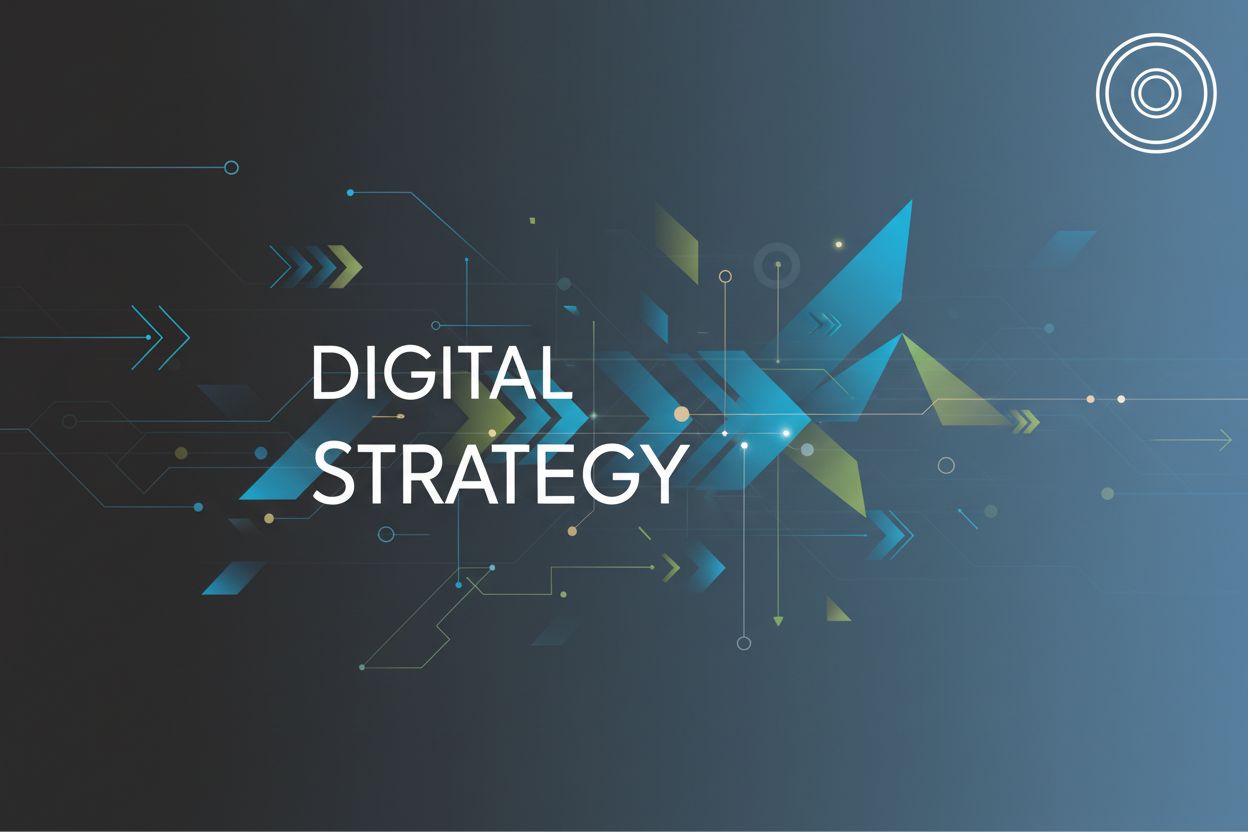Navigating Digital Transformation or Facing Stagnation? Addressing Status Quo Bias in Strategy
TL;DR
The Silent Killer: Understanding Status Quo Bias in Digital Strategy
Okay, let's dive into this "status quo bias" thing. Ever been stuck using a tool—you know, the one that makes you wanna scream—just because "that's how we've always done it?" Yeah, that's exactly what we're talking about. It's a silent killer of digital strategy, and honestly, it's way more common than you think.
Simply put, status quo bias is our brain's tendency to prefer things the way they are. It's a cognitive bias that makes us resist change, even when change could be, like, way better. And in the fast-paced world of digital transformation, this bias can be a real problem.
It's that feeling of, "well, this is working okay, so why bother changing it?" Even if "okay" is, uh, generously defined. Think about a healthcare provider still relying on fax machines when secure digital portals exist. It's not just inefficient; it can compromise patient data.
This bias seriously messes with decision-making. Instead of objectively weighing the pros and cons of new technologies or strategies, we're starting from a place of, "but... we're comfortable here."
And that comfort zone? It's a trap. Organizations that fall prey to status quo bias often miss out on HUGE opportunities. They are prevented from adopting new technologies and strategies that could streamline operations, improve customer experience, or even unlock new revenue streams.
Think about Blockbuster. Remember them? They had the chance to buy Netflix, but, well, you know how that story ends. That's a prime example of status quo bias in action—sticking with what you know (brick-and-mortar stores) instead of embracing the future (streaming).
Or consider a retail chain that resists investing in e-commerce, clinging to the belief that their physical stores are enough. Meanwhile, online retailers are eating their lunch, one click at a time. It's not just about "keeping up"; it's about survival. The cost of inaction can be, and often is, extinction.
A recent study highlighted that companies that proactively adopt digital technologies are 2.5 times more likely to achieve above-average revenue growth compared to those that lag behind.
So, how do you know if status quo bias is lurking in your own organization? Here's a few signs:
Resistance to change: Do you hear a lot of "we've always done it this way" or "that'll never work here"? That's a red flag.
Analyzing past decisions: Look back at past decisions where new ideas were rejected. Was there a clear, logical reason, or was it more of a gut feeling that "we're good where we are"?
Surveys and feedback: Ask your employees! Anonymous surveys can be a great way to gauge how open people are to new ideas and technologies. Really listen to what they're saying.
Spotting status quo bias is the first step to overcoming it. Next, we'll look at strategies for breaking free from its grip and embracing a more innovative, forward-thinking approach.
Breaking Free: Strategies to Overcome Status Quo Bias
Did you know that nearly 70% of digital transformation initiatives fail? Ouch. A big part of that, honestly, is just being stuck in old ways of thinking. So, how do we bust outta that rut? Let's dive into some strategies to help you ditch the status quo bias and embrace innovation.
First up, you gotta create a space where new ideas aren't just tolerated, but celebrated. Think of it like planting a garden; you need the right soil and sunlight for things to grow.
Encouraging and rewarding new ideas is, like, rule number one. This isn't just about lip service; it's about actively soliciting input from employees at all levels. Maybe you have a "suggestion box"—but make it digital, and actually use the suggestions! Publicly acknowledge and reward those who contribute innovative ideas, even if they don't pan out perfectly. It's about the effort, too.
Innovation programs and initiatives can also be a game-changer. These could range from hackathons to dedicated innovation labs, but the key is to provide resources and support for employees to explore new concepts. For instance, a financial services company could create an "innovation incubator" where employees can develop and test new fintech solutions, or a retail company could launch an "intrapreneurship" program, allowing employees to pitch and develop new business ideas.
And speaking of mindset, fostering a growth mindset is crucial. This means encouraging employees to see challenges as opportunities for learning and growth, rather than as threats. Workshops, training sessions, and even just regular team discussions can help cultivate this mindset. It's about creating a culture where failure is seen as a learning opportunity, not a career-ender.
Okay, gut feelings are great, but data is better. Seriously, let the numbers do the talking.
Leveraging data to identify areas for improvement is key. Use analytics to pinpoint bottlenecks, inefficiencies, and areas where the current strategy isn't delivering the desired results. For example, a healthcare provider could analyze patient data to identify patterns in readmission rates and then develop targeted interventions to address those issues. Or, you know, a simpler example - look at your website's analytics to see where people are dropping off and fix those pages!
Using analytics to demonstrate the value of new strategies is how you get buy-in. Present hard evidence that shows how a new approach is outperforming the old one. A marketing team, for instance, could use A/B testing to compare the performance of different ad campaigns and demonstrate the superiority of a new creative approach. If you can show the ceo that your new strategy is bringing in more leads, you're golden.
Creating a feedback loop for continuous optimization is where the magic happens. Regularly monitor the performance of your digital initiatives and use the data to make ongoing adjustments. This might involve setting up automated dashboards, conducting regular performance reviews, and soliciting feedback from users.
Change is hard, especially for people who've been doing things the same way for years. So, you gotta bring everyone along for the ride.
Involving employees in the transformation process is crucial. This isn't just about telling them what to do; it's about actively soliciting their input and making them feel like they're part of the solution. Hold workshops, conduct surveys, and create opportunities for employees to share their ideas and concerns. It's their job too, after all.
Clearly communicating the benefits of digital initiatives is how you win hearts and minds. Explain how the changes will make their jobs easier, more efficient, or more rewarding. Don't just focus on the technology; focus on the human impact.
Providing training and support to help employees adapt is non-negotiable. Give them the skills and knowledge they need to succeed in the new digital landscape. This might involve offering online courses, workshops, or one-on-one coaching.
So, what's next? Well, you've got your culture humming, your data's singing, and your people are on board. Let's talk about how your brand fits into all this.
Building a Future-Proof Digital Strategy
Alright, so you've got the team onboard, the data's lookin' good, but what about your brand? Is it ready for the future? It's kinda like making sure your car has good tires before you try to drive across the country, ya know?
Exploring the potential of ai and automation in digital marketing is huge. I mean, it's not just about chatbots anymore. Think about ai-powered content creation, personalized customer experiences... the possibilities are kinda endless! For example, in the financial sector, ai algorithms can analyze vast amounts of market data to predict trends and automate trading decisions. It's not about replacing marketers, but about augmenting their abilities. Honestly, it's kinda like giving them superpowers.
Staying informed about new technological advancements is, like, a never-ending quest. The digital landscape changes faster than my niece changes her TikTok dances. You gotta follow industry blogs, attend webinars, and maybe even subscribe to a few tech newsletters. A retail company, for instance, needs to keep an eye on advancements in augmented reality (ar) to enhance the in-store experience or virtual try-on features for online shoppers. The key to stay competitive is to never stop learning.
Integrating emerging technologies into your digital strategy isn't just about throwing the latest gadgets at the wall and seeing what sticks. It's about finding the right tools for the job and using them strategically. A healthcare provider could use blockchain technology to securely store and share patient data, while a manufacturing company could use the internet of things (iot) to monitor equipment performance and predict maintenance needs. It's not just about being "innovative;" it's about solving real problems.
Establishing key performance indicators (kpis) to track progress is how you know if you're actually getting anywhere. What gets measured, gets managed, right? These kpis should be aligned with your overall business goals, and they should be specific, measurable, achievable, relevant, and time-bound (smart). A marketing team might track website traffic, conversion rates, and customer acquisition costs. Honestly, if you're not tracking, you're just guessing.
Regularly evaluating the effectiveness of your digital initiatives is crucial. This isn't a "set it and forget it" kinda deal. You need to constantly monitor your performance, identify what's working and what's not, and make adjustments accordingly. > A recent report indicated that companies that conduct quarterly digital strategy reviews are 30% more likely to achieve their revenue targets. It's about being agile and responsive to change.
Being prepared to adapt your strategy based on market changes and customer feedback is what separates the winners from the losers. The market is always evolving, and customer preferences are constantly shifting. You need to be able to pivot quickly and adapt your strategy to stay ahead of the curve.
Setting a clear vision for digital transformation is job number one for any leader. Employees need to understand why the company is undergoing this transformation and what the desired outcome is. Without a clear vision, people are going to be lost and confused.
Empowering employees to embrace change is how you get everyone on board. This means giving them the autonomy to experiment with new technologies and strategies, and it means creating a culture where failure is seen as a learning opportunity. It's about trusting your people and giving them the resources they need to succeed.
Providing the resources and support needed for success is non-negotiable. This includes investing in training, technology, and infrastructure. It also means providing ongoing support and mentorship to help employees adapt to the new digital landscape. You can't expect people to succeed if you don't give them the tools they need.
So, we've talked about embracing new tech, constantly improving, and the leadership role. But what about actually doing it? Next up, we'll get into some actionable steps you can take.
Conclusion: Choosing Progress Over Preservation
Okay, so we've been talking about status quo bias...but what's the real takeaway? Can you actually do anything about it? Absolutely! It's time to ditch the "if it ain't broke, don't fix it" mentality—because in the digital world, things are always breaking, or at least, becoming obsolete.
Seriously, don't let fear hold you back. Here's the gist of it:
Embrace a culture of experimentation. This isn't about wild, reckless changes, but rather about creating an environment where trying new things is encouraged and, you know, celebrated. A retail company could, for example, test new in-store digital displays in a limited number of locations before rolling them out across the chain.
Use data to guide decisions. Gut feelings are fine, but data is better. Track everything, analyze your results, and use those insights to inform your strategy. If you're not measuring, you're basically flying blind.
Involve your team. Change is easier when everyone is on board. Get your employees involved in the transformation process, listen to their ideas, and address their concerns. It makes a huge difference to have everyone pulling in the same direction.
Stay curious, stay informed. The digital landscape is constantly evolving, so make sure you and your team are staying up-to-date on the latest trends and technologies. A manufacturing company, for instance, should really be looking into the potential of IoT (internet of things) and predictive maintenance.
So, what's stopping you? There's a whole world of opportunities out there, and the only thing standing in your way might be...well, you. Take the leap.






